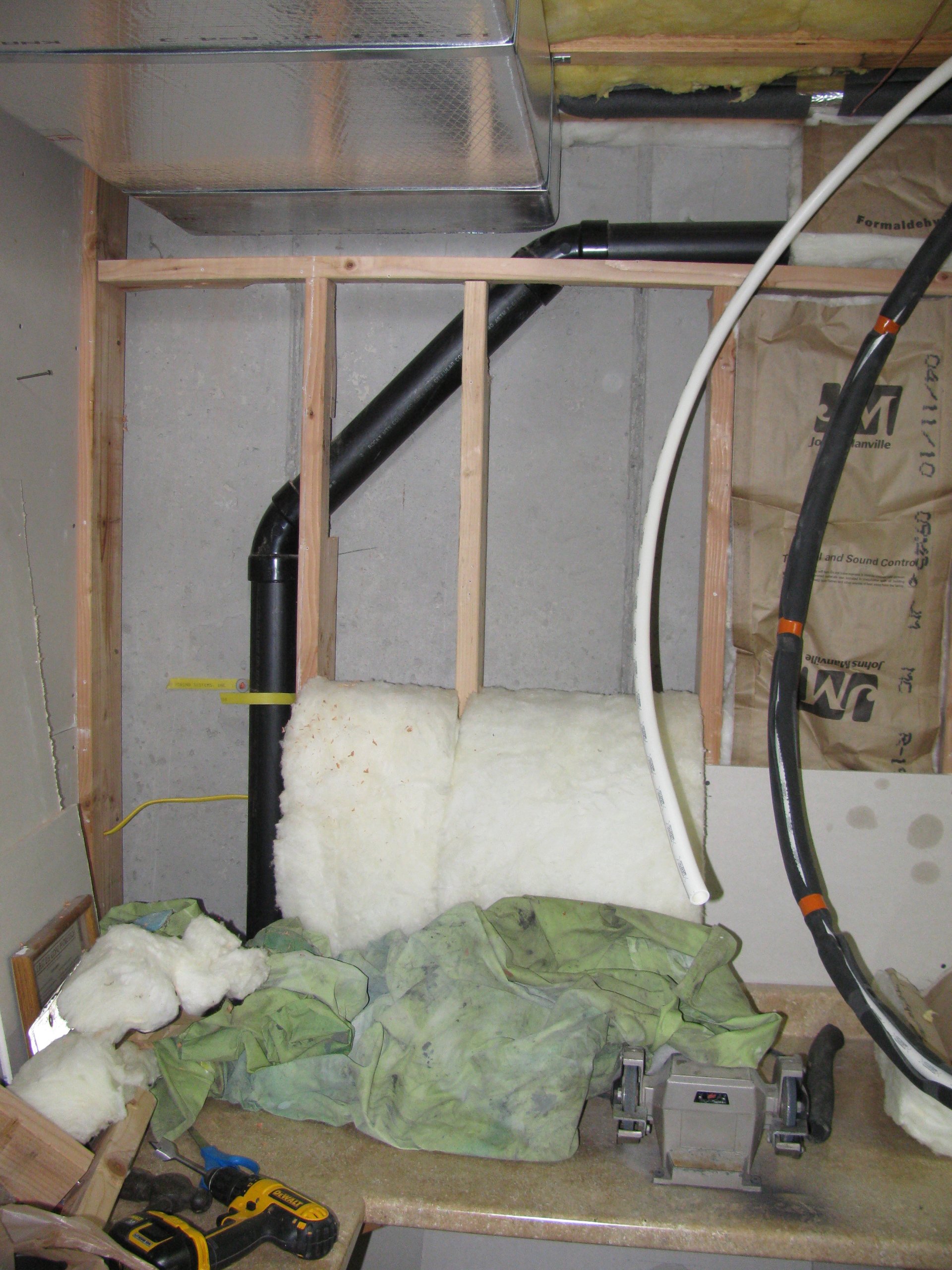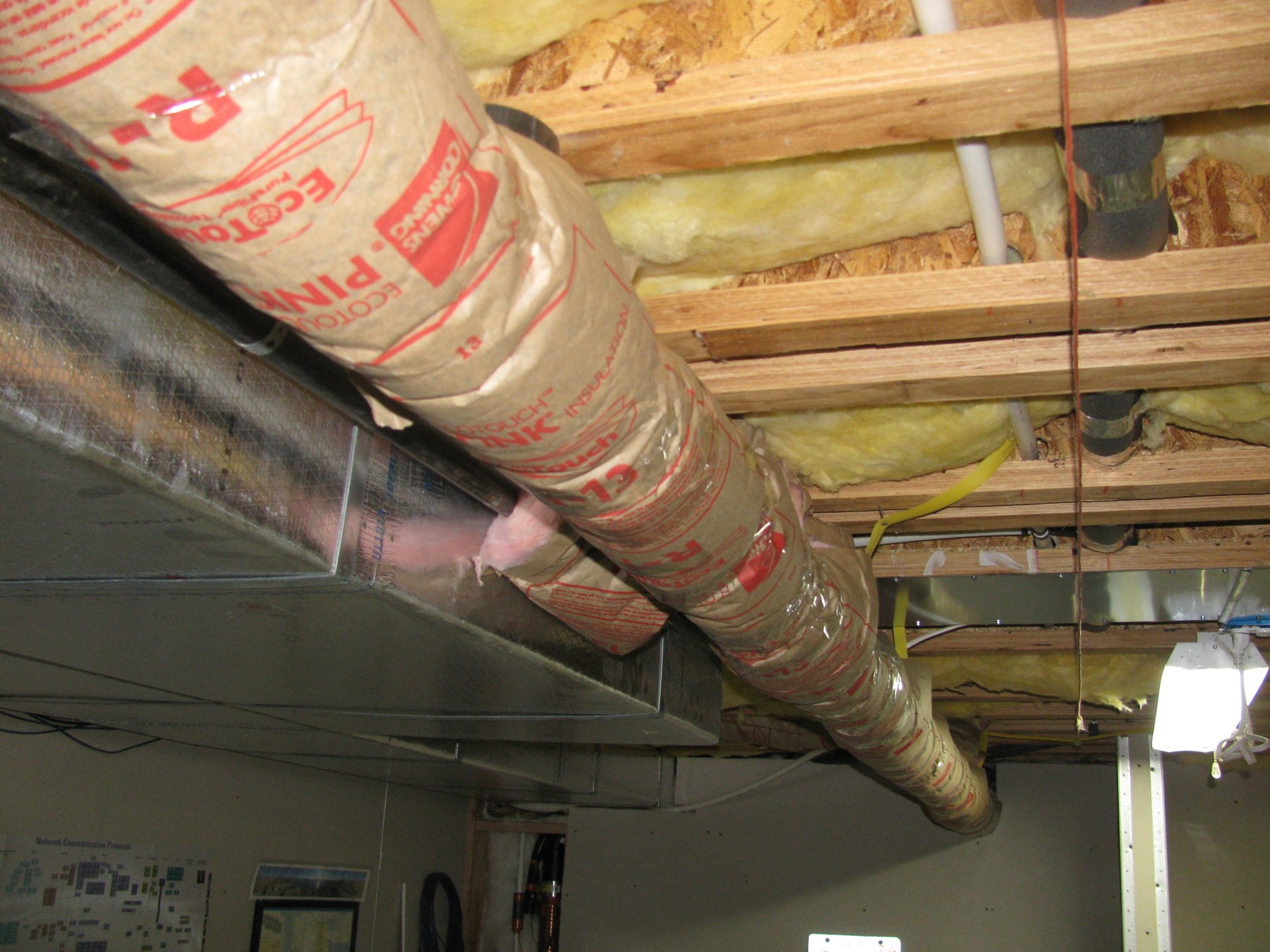Published Monday September 30, 2013: Updated January 20, 2014
Drain-water Heat Recovery Unit


When water runs down a vertical sewer pipe, rather than falling down the center very quickly, it glides down the inside wall of the pipe. In a heat recovering drain, a section of the vertical sewer pipe is replaced with a thermally conductive copper one where a smaller, copper, culinary water pipe is wrapped around the copper sewer pipe. In this manner, heat from warm/hot waste water (and nothing else, ew!) is transferred to the cold water on its way to the water heater.
A typical system costs $600-$1000 depending on the sewer pipe diameter and length of the energy recovering unit. The ROI depends on energy costs, temperature of the incoming cold water supply, how much hot water you use and how you use it.
For example, much of the heat from shower water can be reclaimed because there is a continual flow of warm waste water preheating the continual flow of cold water entering the water heater.
After thinking about it over the past few years, I finally made the decision to buy and install one.



It looks so good, I can't bare to cover it all up inside the wall. So I won't.

The DWHR unit on display like a trophy.
Most of the water in Kaysville City comes from alpine sources in the Weber water district. In the winter time, these streams are just a few degrees above freezing. As the frigid water travels along the underground pipelines, it is warmed up by the ambient ground surrounding it.
If you live close to the source of a mountain water supply, the tap water entering your home will be much colder than it would be for someone who lives farther down the water pipeline.
A drain-water heat-recovery system would make a ton of sense for anyone living close to the Alpine water source.
Due to record high July and near record high August summer temperatures, the city’s culinary water supply was a luke warm, (70-72°F).
Look how much the water temperature varies throughout the year. Wow!


The water temperature for a typical shower is about 102°F. Much of the water's heat in a shower goes toward:
- Warming the occupant.
- Warming up the air in the bathroom.
- Warming up the walls and floor of the shower itself.
After the water has done its job, it goes down the drain. Depending on the time of year, in our home, the temperature of the water going down the drain ranges from 65°F to 82°F. I suspect this variation is due to cooler indoor air temperatures (69 °F) in the winter time and warmer air temperatures in the summer time (76°F). Exterior wall temperature also effects the temperature on one of the shower walls. This temperature loss is non-recoverable.
The DWHR unit will only recover remaining heat in the drain water as it goes down the sewer pipe.
After several months of use, the results are in:
For a 1.5 gpm shower, the efficiency of our 48" DWHR unit is about 64%. However, not every hot water using appliance is ideal for drain water heat recovery. While shower energy recovery efficiency is very high, the whole house water heater energy savings end up coming in around 35%, which is still not too bad.
Efficiency is lower at the beginning of a shower (as the drain pipes warm up) and higher at the end of the shower. Efficiency will be lower for a higher flow-rate shower, (one more reason to switch to lower flow-rate shower heads). When using ultra-slow-mode on the shower head (0.75 gpm) efficiency of the DWHR shoots up to nearly 81%.
The efficiency is the ratio between the change in culinary water temperature and the difference in incoming drain water temperature and incoming culinary water temperature. (Water Out - Water In) / (Drain In - Water In).
Heat Energy Calculations:
One BTU is the amount of energy it takes to raise 1 pound of water 1°F.
By knowing the flow rate of a shower, weight of water (8.34 pounds/gallon) and temperature difference of the culinary water entering and leaving the drain-water heat recover unit, you can then calculate the actual heat energy recovered.
See the table below (data collected on 1/18/2014) for some examples of heat recovery (during a 1.5 gallon/minute shower) through the DWHR unit.
| Elapsed Time | Drain In °F | Water In °F | Water Out °F | Efficiency | BTU/hr | Power (kW) |
|---|---|---|---|---|---|---|
| 3 minutes | 62.1°F | 46.0°F | 54.1°F | 50.6% | 6,080 | 1.78 |
| 4 minutes | 64.8°F | 45.5°F | 57.9°F | 64.5% | 9,322 | 2.73 |
| 5 minutes | 68.7°F | 46.0°F | 60.4°F | 63.5% | 10,809 | 3.17 |
| 9 minutes | 70.9°F | 46.0°F | 62.2°F | 65.2% | 12,160 | 3.56 |
| 12 minutes | 72.9°F | 46.0°F | 63.1°F | 63.8% | 12,835 | 3.76 |
| Hypothetical Instant H2O Heater | 46.0°F | 72.9°F | 20,191 | 5.92 |
The last row (Hypothetical Instant Water Heater) is the theoretical amount of heat energy needed to raise incoming culinary water to the same temperature as the drain water just entering the DWHR unit.
It's mind blowing to me that upwards of 3,600 watts of thermal energy can be recovered throughout a typical shower. That's like plugging in 3 space heaters simultaneously.
Using the energy recovery rate at the 5 minute mark, (10,800 BTU per hour), a 12 minute shower could potentially recover 2160 BTUs (0.633 kWh).
For my household of 6, assuming two 12-minute showers per day, that's an energy savings of 1,577,880 BTU (462 kWh) per year.
Keep in mind this is just considering showers and not factoring in any other energy capture from the drain water of other hot water using appliances.
Since our water heater is electric (assuming 10 cents per kWh) that's an energy cost savings of $46.20 per year. For the original $649 it cost me for this thing, that works out to an ROI of 14 years. Not bad considering this fixture has no moving parts and could probably last for the life of the home.
What about the energy to mine/refine/manufacture this thing?
I had no idea that a drain water heat recovery device could be so controversial. I have received a lot of feedback regarding the environmental impact of manufacturing a DWHR unit. Claims that the energy to make it must be so astronomical that it will never be able to offset it and therefore it is a waste of time and resources to attempt any recovery of waste heat. Don't you just love it when people use local fallacies in their arguments? This one is called the perfectionist fallacy.
But just for fun, let's entertain this argument and see if it has any merit to it, shall we?
According to google, it takes an average of 20,000,000 BTUs to mine and refine 1 ton of pure copper, (or 10,000 BTUs of energy to mine and refine 1 pound of pure copper). The 48" long 3" diameter DWHR unit I installed is nearly 100% copper and weights 19 pounds. So by using these figures, it required 190,000 BTUs to mine and refine the copper that went into it. For good measure let's add on an additional 10,000 BTUs to manufacture it (form copper into various pipes and coil the smaller rectangular pipes around the larger 3" diameter cylindrical pipe).
In other words, to pay back this ~200,000 BTUs of energy, our 48" long, 3" diameter DWHR unit would have to be in use in my home (capturing waste heat from showers), for 46 days (1.6 months).
Wait!! That's it? Wow! That's way shorter than I would have guessed.
Epilogue:
Our house is large and spread out. The kitchen is on one end of the house, the master bathroom is on the other and the water heater is in the middle of the basement. Most of the bathrooms drain into one sewer stack and the kitchen and laundry drain into another sewer stack.
It would be ideal if everything flowed into a single sewer stack, that way the DWHR could recover all that wasted drain heat.
Although roomy, comfortable and luxurious, on a thermodynamic, “conservation of energy” standpoint, our house does not have an energy efficient plumbing layout. Oh well, it is what it is.
It takes a while running the faucet before the water gets hot and there is a lot of sewer line that separates the bathroom showers from the vertical stack where I installed the DWHR unit.
I already hyper insulated the hot water lines going to each fixture. I’m starting to think that I need to insulate the horizontal sewer lines as well. That way the drain water will stay hotter for longer and more heat can be recaptured in the DWHR.
"Insulate sewer lines? Nobody does that! You are insane!
That's crazy talk!"


